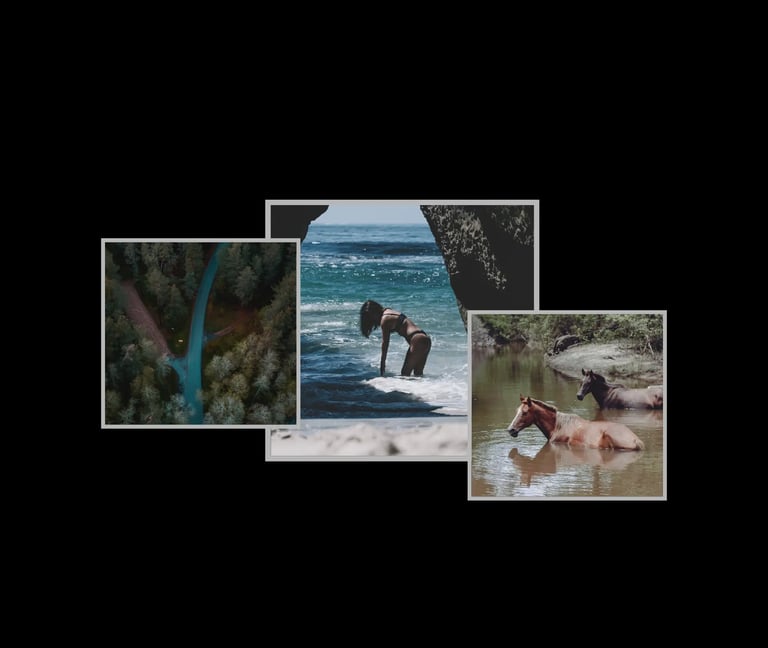The End of Throwaway Culture: Why We Must Embrace a Circular Economy
SUSTAINABILITYCONSUMERISM


In a world increasingly shaped by climate crises, collapsing supply chains, and resource scarcity, the phrase “take, make, dispose” no longer fits. Linear consumption — the foundation of our global economy — is no longer just unsustainable. It’s untenable.
It’s time we embrace a circular economy: a model not based on extraction and waste, but on longevity, repair, and regeneration. A system that mimics nature itself, where nothing is lost, and everything is reused, repurposed, or returned. This isn’t idealism — it’s the future of survival, and, if done correctly, of prosperity too.
The Problem With the Linear Economy
Our current economic model is built on a straight line: extract raw materials, manufacture products, use them, and dispose of them — often far too quickly. According to the Ellen MacArthur Foundation, more than 90% of the materials used in the global economy are wasted after a single use. Meanwhile, only 7.2% of resources are cycled back into the system, a figure that has declined since 2020.
In fashion, this waste is particularly stark. The world produces over 100 billion garments annually, and yet a truckload of clothing is burned or sent to landfill every second. Electronics fare no better. E-waste is the fastest-growing waste stream in the world, with less than 20% being properly recycled.
The linear model isn't just inefficient — it’s exploitative. It relies on cheap labour, encourages overproduction, and externalises environmental costs. Consumers pay with their wallets, workers pay with their dignity, and the planet pays with its future.
What Is the Circular Economy?
The circular economy turns this model on its head. Instead of designing products to be used and discarded, we design them to be durable, repairable, and recyclable. Materials stay in use, waste becomes input, and value is preserved.
The goal isn’t just to reduce harm — it’s to create systems that regenerate. In practice, this means:
Designing out waste and pollution
Keeping products and materials in use
Regenerating natural systems
It sounds simple, but it requires an overhaul of how we make, market, and manage everything — from clothing to consumer tech.
Built to Last — A Radical Idea?
In a society hooked on fast fashion, planned obsolescence, and seasonal upgrades, building things that last has become almost radical. But durability is a cornerstone of circularity.
Take Patagonia, for example. The outdoor apparel brand has made longevity a pillar of its business. Through its Worn Wear programme, Patagonia repairs over 100,000 items annually and encourages customers to buy secondhand or fix what they already own. The brand even ran an ad in 2011 that read, “Don’t Buy This Jacket,” urging people to consider the environmental cost of new garments.
Similarly, Fairphone — a Dutch company making modular smartphones — has reimagined electronics with repairability in mind. Their devices are designed to be opened, upgraded, and fixed by users. In a sector notorious for locked-down designs and glued-in batteries, Fairphone is a refreshing, and necessary, alternative.
Circularity in Fashion, Furniture, and Beyond
Fashion brands like Raeburn, Eileen Fisher, and PANGAIA are designing circularity into their collections, using regenerative fibres, closed-loop manufacturing, and take-back schemes. Eileen Fisher Renew has collected over 1.9 million garments from customers since 2009, reselling or remaking them into new pieces.
In furniture, Vitsoe has built its entire brand on modularity and longevity. Their shelving systems are designed to last decades, not seasons — and can move and adapt with users over time. IKEA, long associated with disposable design, has recently committed to becoming fully circular by 2030, launching buy-back schemes and products built for disassembly and reuse.
Even the beauty industry is responding. UpCircle repurposes food waste — like coffee grounds and fruit stones — into skincare products, reducing landfill while creating high-performance formulas. It’s proof that innovation doesn’t have to mean extraction.
Why It Matters Now More Than Ever
We are running out of time — and resources. By 2050, global resource use is expected to double, and we’d need the equivalent of three Earths if we continue consuming at our current rate, according to the United Nations.
The circular economy isn’t a luxury or an aesthetic lifestyle choice. It’s an urgent and pragmatic response to ecological collapse. It’s about resilience — economic, environmental, and social.
Circular systems can also be more equitable. When we prioritise repair, local remanufacturing, and community reuse systems, we decentralise value creation. Jobs are created at the local level, and supply chains become less vulnerable to global disruption.
It’s also good business. A report from Accenture predicts that the circular economy could unlock $4.5 trillion in global economic growth by 2030, particularly for companies willing to redesign business models around services, leasing, and reuse.
The Role of Consumers — and Culture
Of course, circularity isn’t just the responsibility of brands. Culture plays a vital role.
As consumers, we need to shift our expectations. Fast, cheap, and constant must give way to slow, considered, and lasting. We can ask better questions: Who made this? Can I repair it? Where will it go when I’m done?
We can celebrate care over consumption. Rituals of repair, hand-me-downs, and timeless design can become aspirational again — not signs of frugality, but of wisdom.
Influencers, media, and platforms like Thrive Century — which curates sustainable and ethical brands through initiatives like The Green List — are helping shift the narrative, showing that circular living isn’t about sacrifice. It’s about intention.
From Circular Products to Circular Mindsets
Ultimately, a circular economy is not just about products — it’s about mindsets. It’s about embracing complexity, long-term thinking, and interdependence. It’s about moving from “ownership” to “stewardship”, from “more” to “better”, from “new” to “enough”.
We’ve spent decades designing for disposability. The road ahead is about unlearning that instinct — and learning to build again with care, durability, and humility.
Because the future doesn’t belong to the fast — it belongs to the circular.


